There’s good news from the Vatican via The Art Newspaper’s website:
The Vatican Museums in Rome are set to open a room devoted to the works of Matisse later this year. The move is designed to further boost the profile of its modern and contemporary religious art department. Large-scale preparatory sketches by the French artist, relating to items adorning the Chapel of the Rosary in Vence on the Cote d’Azur, will go on public display for the first time. The works were donated to the Vatican by the artist’s son Pierre in 1980.
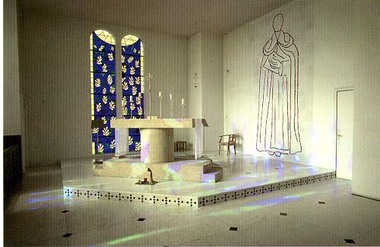 Just to refresh your memory, Matisse began work on the Chapel in 1948 and, according to the Vence website, “It was the first time that a painter entirely designed every detail of a monument, from the architecture to the furniture.”
Just to refresh your memory, Matisse began work on the Chapel in 1948 and, according to the Vence website, “It was the first time that a painter entirely designed every detail of a monument, from the architecture to the furniture.”
Matisse, it continues, said, “this work required me 4 years of an exclusive and entiring effort and it is the fruit of my whole working life. In spite of all its imperfections I consider it as my masterpiece.”
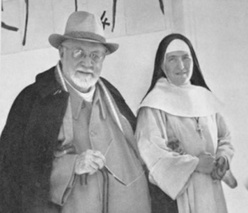 Matisse, the story goes, created the chapel because of his friendship with Sister Jacques-Marie, who according to her 2005 obit in The New York Times “met Matisse in 1942, when she was a student nurse named Monique Bourgeois and Matisse, in his early 70’s and recovering from intestinal cancer, advertised for a “young and pretty night nurse.” She propped up his pillows, read to him and took walks with him, and her impish wit and straightforward conversation enchanted him.”
Matisse, the story goes, created the chapel because of his friendship with Sister Jacques-Marie, who according to her 2005 obit in The New York Times “met Matisse in 1942, when she was a student nurse named Monique Bourgeois and Matisse, in his early 70’s and recovering from intestinal cancer, advertised for a “young and pretty night nurse.” She propped up his pillows, read to him and took walks with him, and her impish wit and straightforward conversation enchanted him.”
She later entered the convent, and when she again found herself back in Vence, to convalesce from tuberculosis, the idea of a chapel arose:
Sister Jacques-Marie sketched an Assumption for Matisse and he urged her to turn it into a stained-glass window. It happened that the rest home, Foyer Lacordaire, was hoping to convert a ramshackle garage used for prayer into a full-fledged chapel, and Matisse wondered if displaying the window could help raise money.
…Matisse roughed out a sketch for a chapel, and Sister Jacques-Marie made the working model. Soon Matisse immersed himself in every aspect of the chapel, from the brushstroke sketches of a Stations of the Cross mural to the vestments and the slender Crucifixion altarpiece. The stained-glass windows, with one pair, “Tree of Life,” suggestive of a flowering cactus, are regarded as particular triumphs; they allow lemon-yellow, bottle-green and blue light to play capriciously against white-tiled walls and the marble floor.
Of course, these Matisse works are fragile, but the Vatican says they will go on display in a room with no windows. More details about the Vatican plans for this, and a recap of its contemporary art efforts are in The Art Newspaper article, and here’s the link.

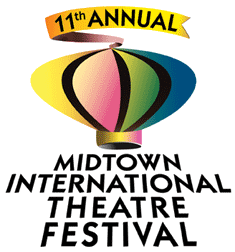 Both plays I saw — out of more than two dozen on offer — showed real promise; they were not perfect, but what is? Most of the acting was polished, too.
Both plays I saw — out of more than two dozen on offer — showed real promise; they were not perfect, but what is? Most of the acting was polished, too. 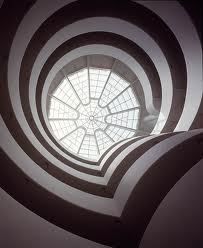 The devil is in the details, though — and a few of them are troubling. Corporations play a big role in this contest, starting with YouTube, which is owned by Google. To name the actual contest for a company is over-the-top, isn’t it?
The devil is in the details, though — and a few of them are troubling. Corporations play a big role in this contest, starting with YouTube, which is owned by Google. To name the actual contest for a company is over-the-top, isn’t it? 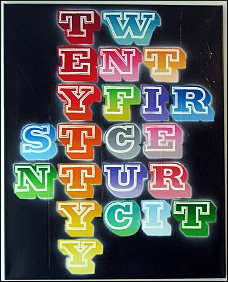 Ed Ruscha should be smiling this morning. The word from the White House is that President Obama has given British Prime Minister David Cameron a gift of one of Ruscha’s signed color lithographs. Column With Speed Lines was reportedly chosen because it’s red, white and blue — the colors on both countries’ flags.
Ed Ruscha should be smiling this morning. The word from the White House is that President Obama has given British Prime Minister David Cameron a gift of one of Ruscha’s signed color lithographs. Column With Speed Lines was reportedly chosen because it’s red, white and blue — the colors on both countries’ flags.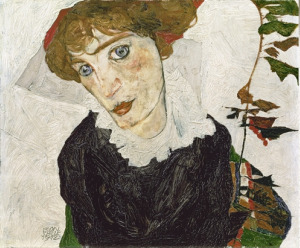 The estate of Leah Bondi Jaray has reached a settlement with the Leopold Museum over Schiele’s Portrait of Wally. I won’t go through the whole saga — I foreshadowed the settlement and my role in the origins of this case, which began in 1997,
The estate of Leah Bondi Jaray has reached a settlement with the Leopold Museum over Schiele’s Portrait of Wally. I won’t go through the whole saga — I foreshadowed the settlement and my role in the origins of this case, which began in 1997,